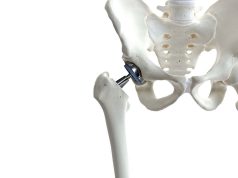Benefit of perioperative VTE chemoprophylaxis limited to surgical patients with Caprini scores ≥7
WEDNESDAY, Jan. 25, 2017 (HealthDay News) — Perioperative venous thromboembolism (VTE) prophylaxis is beneficial only for surgical patients with Caprini scores of ≥7, according to a meta-analysis published online Jan. 23 in the Annals of Surgery.
Christopher J. Pannucci, M.D., from the University of Utah in Salt Lake City, and colleagues conducted a meta-analysis to examine the benefits and harms of chemoprophylaxis in surgical patients individually risk stratified for VTE using Caprini scores. Thirteen studies were included, of which 11 (with 14,776 patients) contained data for VTE events and eight (with 7,590 patients) contained data for clinically relevant bleeding with and without chemoprophylaxis.
The researchers found that most patients received mechanical prophylaxis. Among patients who did not receive chemoprophylaxis, there was a 14-fold variation in VTE risk, from 0.7 to 10.7 percent; the likelihood of VTE was increased among patients at increased levels of Caprini risk. Significant risk reduction was seen after surgery with chemoprophylaxis for patients with Caprini scores of 7 to 8 and >8 (odds ratios, 0.60 and 0.41, respectively). Seventy-five percent of the overall population had Caprini scores of ≤6 and did not have a significant reduction in VTE risk with chemoprophylaxis. There was no correlation noted between postoperative bleeding risk and Caprini scores.
“Precision medicine using individualized VTE risk stratification helps ensure that chemoprophylaxis is used only in appropriate surgical patients and may minimize bleeding complications,” the authors write.
Full Text (subscription or payment may be required)
Copyright © 2017 HealthDay. All rights reserved.








